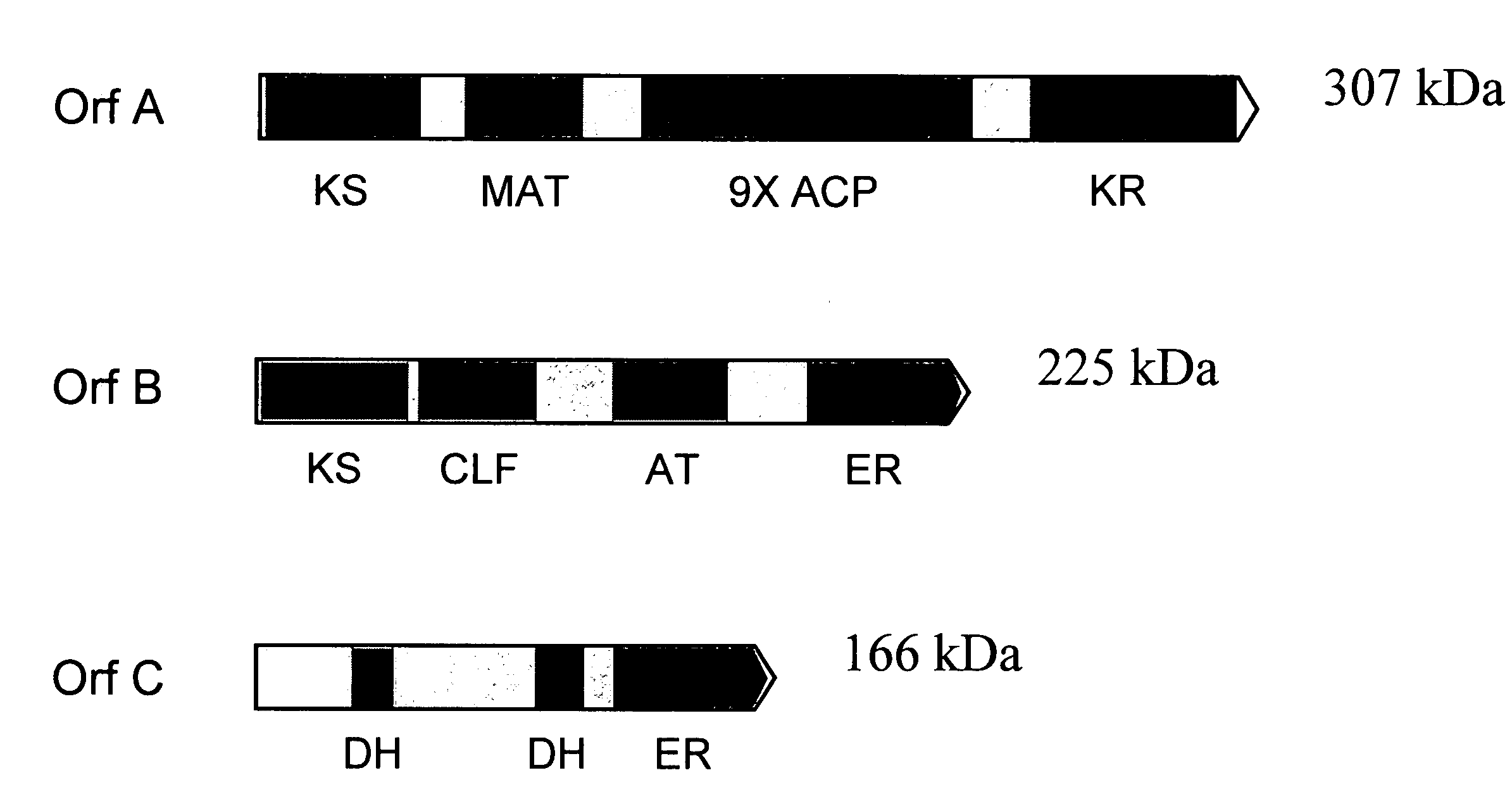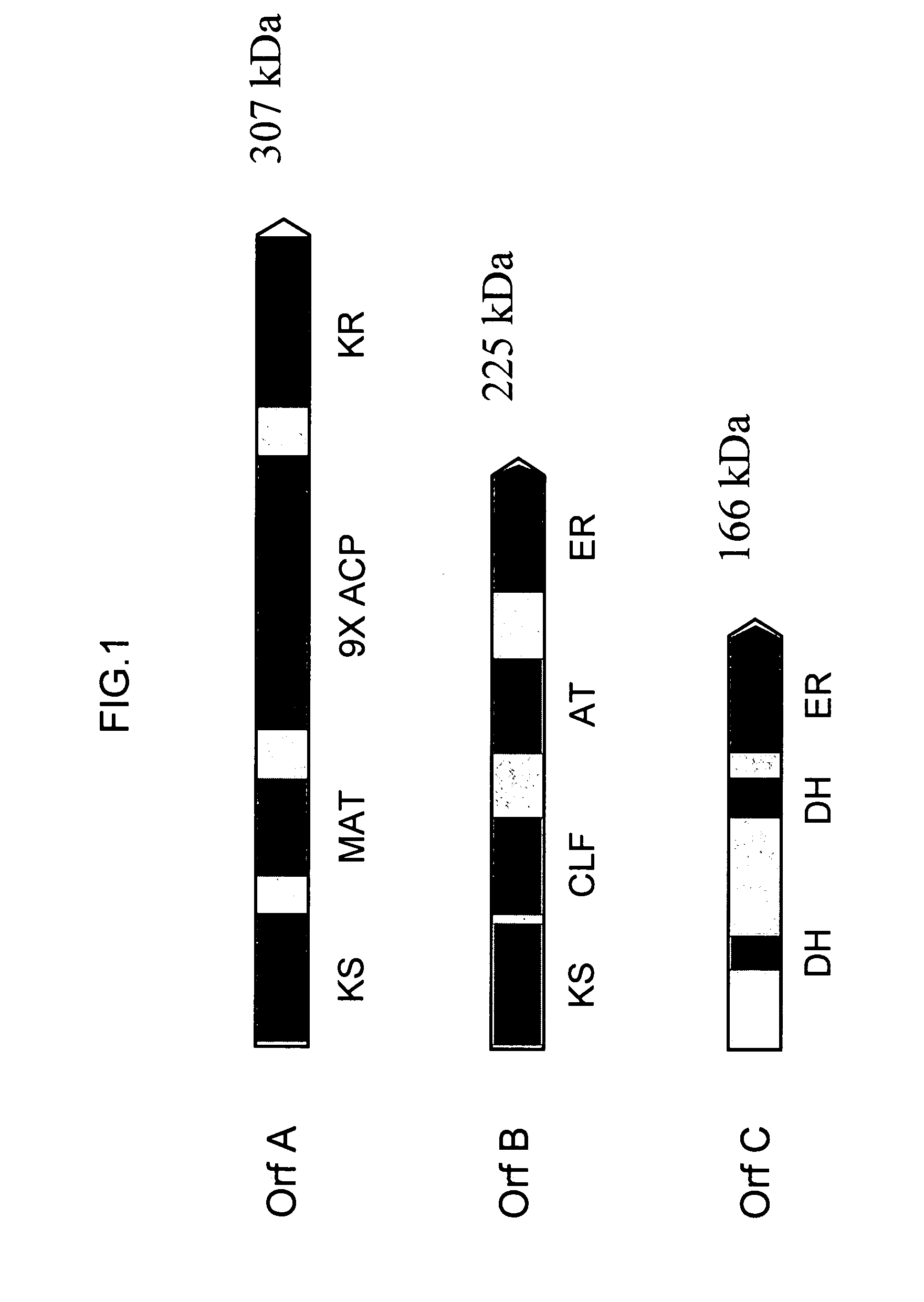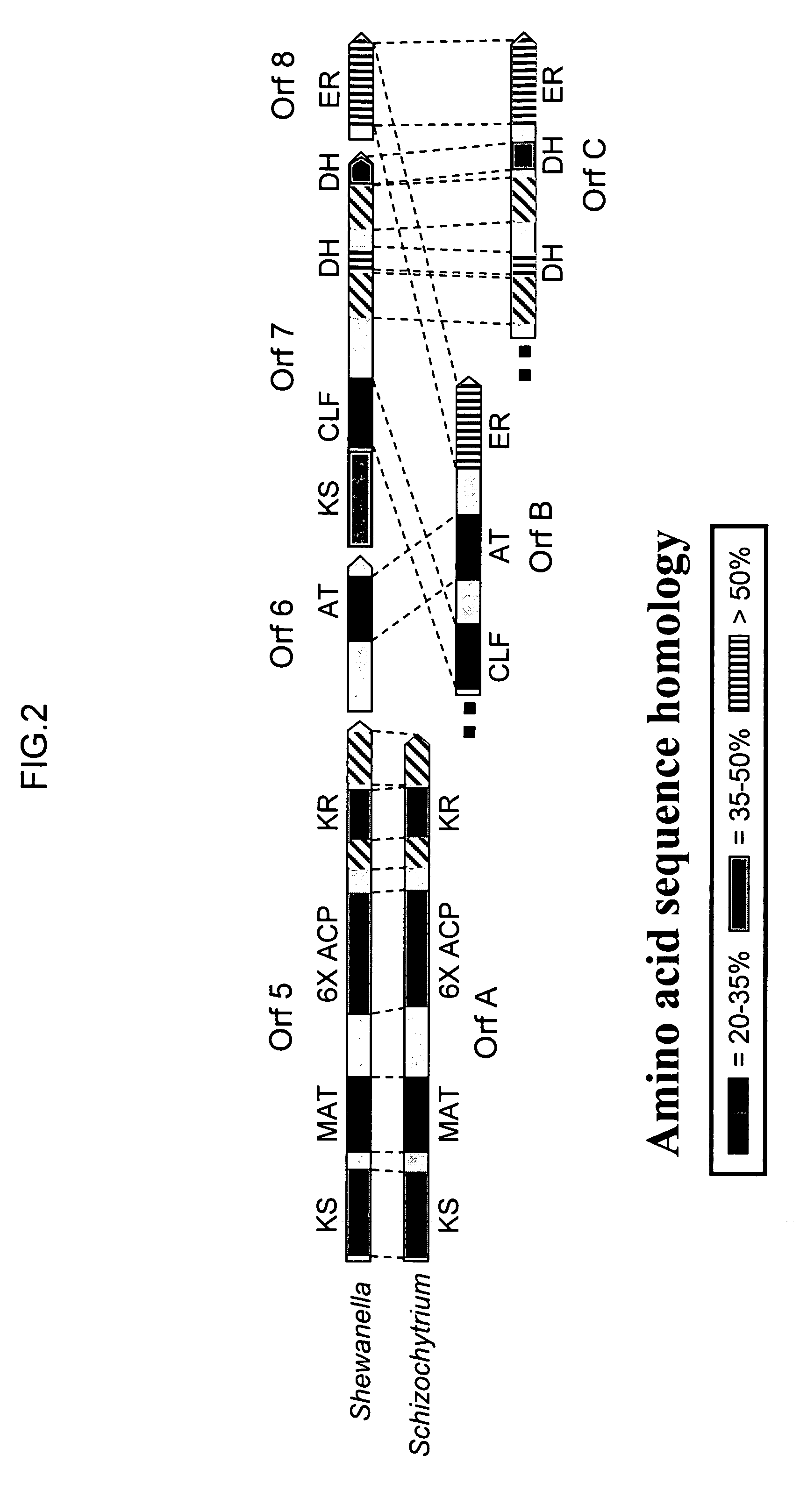PUFA polyketide synthase systems and uses thereof
a polyketide synthase and polyunsaturated fatty acid technology, applied in the field of polyunsaturated fatty acid (pufa) polyketide synthase (pks) systems, can solve the problems of declining fish stocks, insufficient commercial supply of pufas from natural sources and chemical synthesis, and inability to meet the needs of commercial us
- Summary
- Abstract
- Description
- Claims
- Application Information
AI Technical Summary
Benefits of technology
Problems solved by technology
Method used
Image
Examples
example 1
[0230]The following example demonstrates that Schizochytrium Orfs A, B and C encode a functional DHA / DPA synthesis enzyme via functional expression in E. coli.
General Preparation of E. coli Transformants
[0231]The three genes encoding the Schizochytrium PUFA PKS system that produce DHA and DPA (Orfs A, B & C; SEQ ID NO:1, SEQ ID NO:3 and SEQ ID NO:5, respectively) were cloned into a single E. coli expression vector (derived from pET21c (Novagen)). The genes are transcribed as a single message (by the T7 RNA-polymerase), and a ribosome-binding site cloned in front of each of the genes initiates translation. Modification of the Orf B coding sequence was needed to obtain production of a full-length Orf B protein in E. coli (see below). An accessory gene, encoding a PPTase (see below) was cloned into a second plasmid (derived from pACYC184, New England Biolabs).
[0232]The Orf B gene is predicted to encode a protein with a mass of ˜224 kDa. Initial attempts at expression of the gene in E....
example 2
[0239]The following example shows the expression of genes encoding the Schizochytrium PUFA synthase (sOrfA, sOrfB and native Orf C) along with Het I in baker's yeast (Saccharomyces cerevisiae).
[0240]The Schizochytrium PUFA synthase genes and Het I were expressed in yeast using materials obtained from Invitrogen (Invitrogen Corporation, Carlsbad, Calif.). The INVscl strain of Saccharomyces cerevisiae was used along with the following transformation vectors: pYESLeu (sOrfA), pYES3 / CT (sOrfB), pYES2 / CT (OrfC) and pYESHis (HetI). To accommodate yeast codon useage, the nucleotide sequences for OrfA (SEQ ID NO:1) and for OrfB (SEQ ID NO:3) were resynthesized. The nucleotide sequence for the resynthesized OrfA (contained in pYESLeu), designated sOrfA, is represented herein by SEQ ID NO:43. SEQ ID NO:43 still encodes the OrfA amino acid sequence of SEQ ID NO:2. The nucleotide sequence for the resynthesized OrfB (contained in pYES3 / CT), designated sOrfB, is represented herein by SEQ ID NO:44...
example 3
[0243]The following examples describes the expression of genes encoding the Schizochytrium PUFA synthase (Orf A, Orf B* and Orf C) along with Het I in Arabidopsis.
[0244]The Schizochytrium Orfs A, B* (see Example 1) and C along with Het I were cloned (separately or in various combinations including all 4 genes on one Super-construct) into the appropriate binary vectors for introduction of the genes into plants. Each gene was cloned behind a linin promoter and was followed by a linin terminator sequence (Chaudhary et al., 2001; PCT Publication Number No. WO 01 / 16340 A1). For localization of the PUFA synthase in the cytoplasm of plant cells, no additional protein encoding sequences were appended to the 5′end of the Orfs. For directing the proteins to the plastid, additional 5′ sequences encoding a plastid targeting sequence derived from a Brassica napus acyl-ACP thioesterase were added to the Orfs. The amino acid sequence of the encoded targeting peptide is: MLKLSCNVTNHLHTFSFFSDSSLFIP...
PUM
| Property | Measurement | Unit |
|---|---|---|
| melting temperatures | aaaaa | aaaaa |
| temperature | aaaaa | aaaaa |
| temperature | aaaaa | aaaaa |
Abstract
Description
Claims
Application Information
 Login to View More
Login to View More - R&D
- Intellectual Property
- Life Sciences
- Materials
- Tech Scout
- Unparalleled Data Quality
- Higher Quality Content
- 60% Fewer Hallucinations
Browse by: Latest US Patents, China's latest patents, Technical Efficacy Thesaurus, Application Domain, Technology Topic, Popular Technical Reports.
© 2025 PatSnap. All rights reserved.Legal|Privacy policy|Modern Slavery Act Transparency Statement|Sitemap|About US| Contact US: help@patsnap.com



